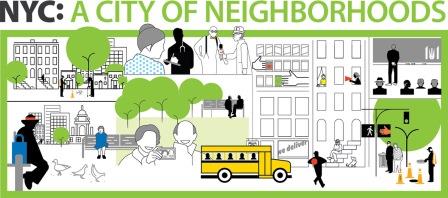Age-friendly Neighborhoods Initiative



From our surveys and consultations, older adults said that New York City is a City of neighborhoods and-as they have aged-the immediate area where they live has become more important to them. They also said that each of the City’s neighborhoods has its own strengths and shortcomings, and creative solutions must be developed organically in communities not just through uniform city-wide policy. To address these specific neighborhood concerns, the AFN initiative brings together leaders and resources of local businesses, non-profit organizations, City officials, and cultural, educational and religious institutions to think strategically and implement no-and low-cost improvements to make the neighborhood more inclusive of its older residents. The AFN initiative is the continuation and expansion of the earlier pilot programs of Aging Improvement Districts (AIDs).
Website: http://www.agefriendlyneighborhoods.nyc/
Main target group: Older people in general
Other target group(s): Older men, Older women, Older people living alone, People with mobility challenges, Younger people, Public sector, Private sector, Civil society organisations, Volunteers
Sector(s): Social protection
Other issues the Age-friendly practice aims to address:Name: Goldman, Lindsay
Email address: goldman@nyam.org
Preferred language(s): English